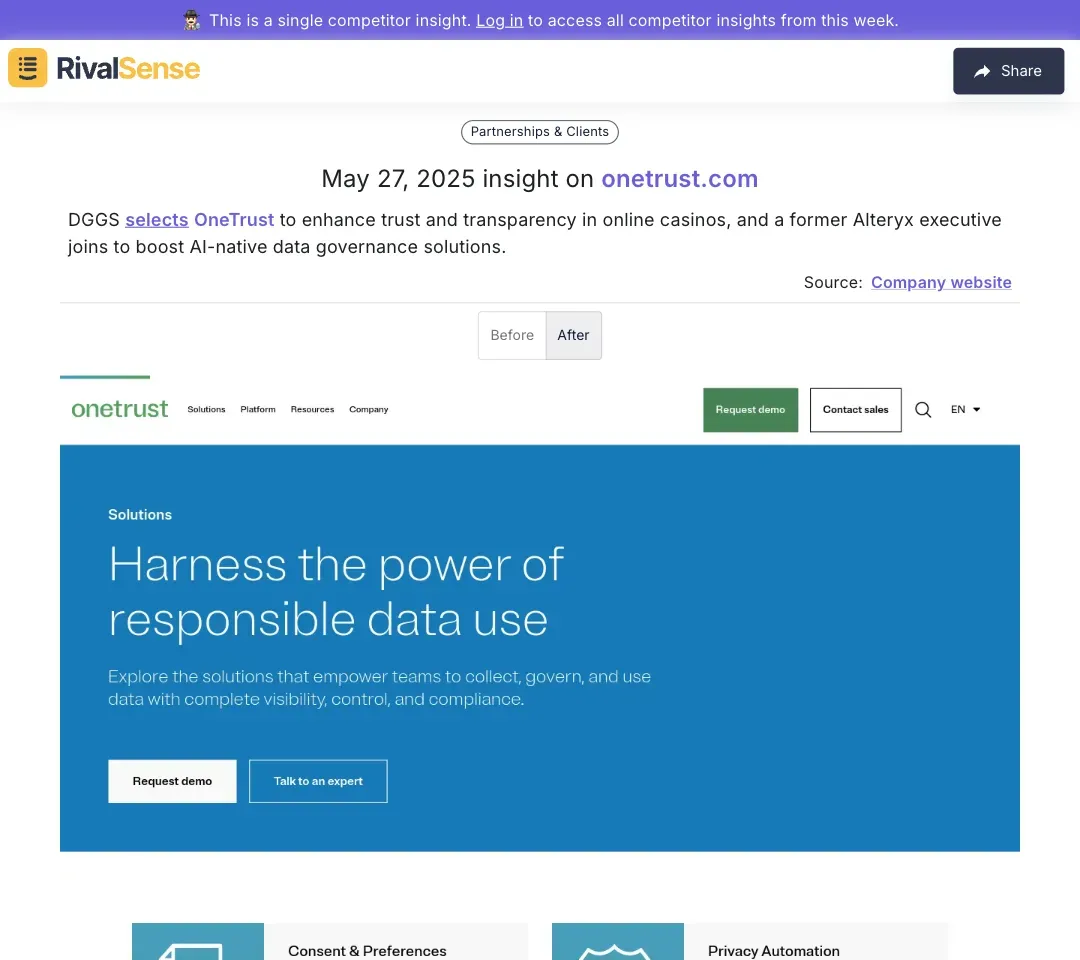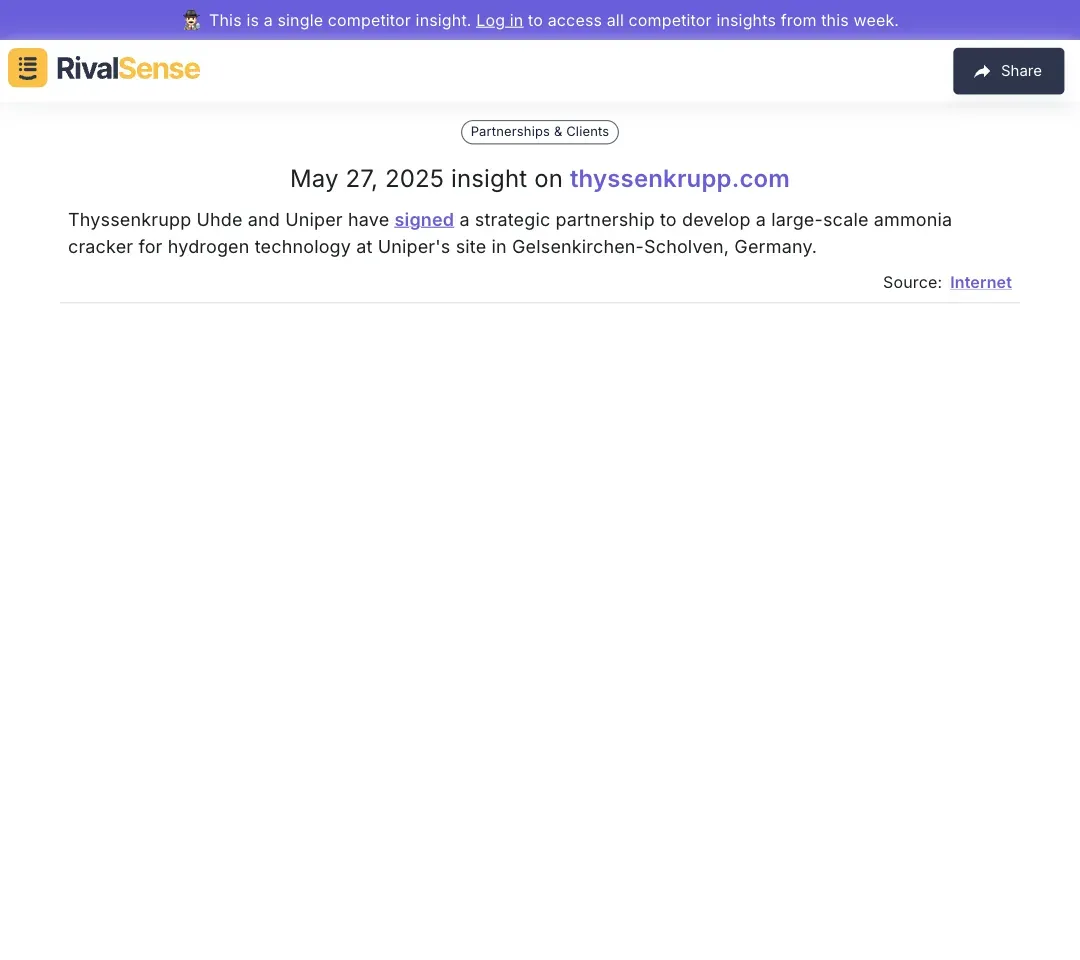Boost Productivity with Strategic Competitor Insights on Partnerships
In today's fast-paced business environment, understanding your competitors is not just about keeping up—it's about staying ahead. Strategic competitor insights provide a roadmap to navigate competitive markets, revealing opportunities and threats that shape your business strategies. By analyzing competitors' moves, you can anticipate market trends, adapt your offerings, and position your brand more effectively.
Partnerships often serve as hidden growth accelerators in this landscape. Collaborating with the right allies amplifies your strengths, mitigates weaknesses, and unlocks new markets. The key lies in identifying partners who complement your business and align with strategic goals—precisely where competitor intelligence delivers actionable advantages.
Here’s what we’ll cover:
- Why Competitor Insights Matter: How analysis informs partnership strategies
- Identifying the Right Partners: Using data to find goal-aligned allies
- Actionable Steps: Checklist to transform insights into productive collaborations
💡 Pro Tip: Track competitors’ partnership patterns quarterly to spot industry shifts.
Enhancing Trust and Transparency Through Partnerships
Strategic partnerships build credibility by merging complementary strengths into unified solutions. They transform abstract values like "trust" into tangible customer experiences through joint capabilities. For B2B leaders, these alliances directly impact brand perception and client retention in competitive markets.
Consider this real-world example:

DGGS selected OneTrust to enhance trust in online casinos, while onboarding a former Alteryx executive to boost AI-native data governance. Tracking such moves reveals how competitors leverage partnerships for credibility—helping you identify similar trust-building opportunities.
Actionable Framework:
-
Partner Selection Criteria:
- ✅ Evaluate market reputation and client testimonials
- ✅ Audit technological/cultural compatibility
- ✅ Define mutual KPIs upfront
-
Leadership Integration:
- Assign C-suite champions to co-own partnership outcomes
- Conduct quarterly alignment workshops
-
Transparency Tactics:
- Co-develop public-facing progress reports
- Implement shared customer feedback loops
🔍 Why this matters: Monitoring executive hires in partnerships (like DGGS did) signals strategic pivots before public announcements.
Collaborating on Innovation and Technology
Technology partnerships accelerate R&D cycles by 40-60% according to McKinsey. They enable resource-pooling for high-risk innovations while distributing development costs. For scaling businesses, these collaborations turn capability gaps into competitive advantages overnight.
Observe this energy-sector innovation:

Thyssenkrupp Uhde and Uniper partnered to develop large-scale ammonia cracking for hydrogen tech—a move signaling industry bets on green energy. Analyzing such joint ventures helps benchmark your innovation pace against sector leaders.
Implementation Checklist:
| Step | Action | Outcome |
|---|---|---|
| 1 | Map competitors' tech partnerships | Identify capability gaps |
| 2 | Screen for complementary IP holders | Shortlist potential partners |
| 3 | Pilot co-development sprints | Validate synergy before scaling |
💻 Tech Tip: Prioritize partners with overlapping patent portfolios to reduce integration friction.
Exploring New Markets and Opportunities
Geographic or demographic expansion through partnerships de-risks market entry by 70%. Memorandums of Understanding (MoUs) serve as low-commitment testing grounds for international plays. Savvy leaders treat these as live laboratories for growth experiments.
This defense industry MoU illustrates the approach:

Thyssenkrupp Marine Systems and Saab Australia’s MEKO A-200 frigate MoU shows how non-binding agreements test collaboration viability. Tracking such exploratory deals helps anticipate market entries before competitors establish footholds.
Market Expansion Blueprint:
-
Identify Bridge Partners:
- Target companies with local regulatory expertise
- Avoid direct competitors (aim for complementary audiences)
-
MoU Essentials:
- Outline 90-day test objectives
- Define exit clauses for underperformance
-
Pilot Metrics:
- Track customer acquisition cost (CAC) reduction
- Measure partner-led lead generation
🌏 Critical Insight: MoUs like Thyssenkrupp/Saab often precede full JVs—monitor them for expansion signals.
Boosting Productivity with Competitive Intelligence
Competitor partnership analysis directly impacts operational efficiency. By reverse-engineering rivals' collaborative models, you eliminate trial-and-error in alliance building. This intelligence streamlines decision-making while freeing resources for execution.
Productivity Optimization Framework:
flowchart LR
A[Track competitor partnerships] --> B[Benchmark deal frequency]
B --> C[Identify process gaps]
C --> D[Adapt winning strategies]
Key Metrics to Track:
- ⏱️ Time-to-partnership (industry benchmark vs. yours)
- 📈 Revenue per collaborative initiative
- 🔄 Resource allocation efficiency gains
Implementation Steps:
- Automate tracking with tools like RivalSense
- Conduct monthly "partnership health scans"
- Integrate findings into quarterly planning
📊 Data Point: Companies using automated competitor insights report 31% faster partnership activation (Forrester).
Conclusion: Turning Insights into Action
Strategic partnerships fueled by competitor intelligence deliver compound growth. They transform market observations into revenue-generating alliances while optimizing operational efficiency. The future belongs to businesses that institutionalize this insight-to-action cycle.
Your 30-Day Execution Plan:
- Audit: Map current partnerships against competitor models
- Prioritize: Target 1 high-impact collaboration opportunity
- Instrument: Implement tracking for real-time insights
🚀 Ready to accelerate? Try RivalSense for free and get your first competitor report today. Automate tracking of product launches, pricing changes, executive moves, and partnerships—turning intelligence into your unfair advantage.
📚 Read more
👉 Strategic Competitor Tracking: How to Stay Ahead in the B2B Landscape
👉 How to Analyze Competitor Support Strategies: A Founder's Guide to Winning Customer Loyalty
👉 🔍 Insurance Competitor Weakness Identification: Templates, Frameworks & Actionable Strategies
👉 How Marsh Redefined Real Estate Acquisitions – And What Your Business Can Learn
👉 Outsmart Competitors: Leverage Tech Trends & Real-Time Insights for Strategic Wins
